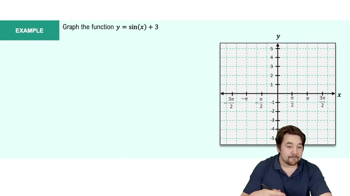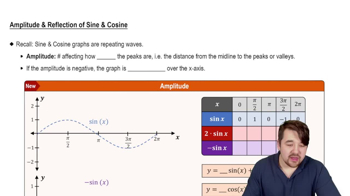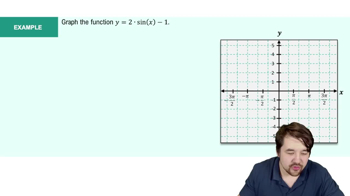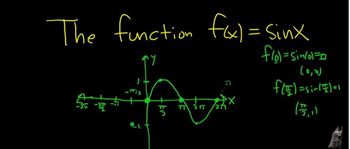Table of contents
- 0. Review of College Algebra4h 43m
- 1. Measuring Angles39m
- 2. Trigonometric Functions on Right Triangles2h 5m
- 3. Unit Circle1h 19m
- 4. Graphing Trigonometric Functions1h 19m
- 5. Inverse Trigonometric Functions and Basic Trigonometric Equations1h 41m
- 6. Trigonometric Identities and More Equations2h 34m
- 7. Non-Right Triangles1h 38m
- 8. Vectors2h 25m
- 9. Polar Equations2h 5m
- 10. Parametric Equations1h 6m
- 11. Graphing Complex Numbers1h 7m
4. Graphing Trigonometric Functions
Graphs of the Sine and Cosine Functions
Problem 4.16
Textbook Question
Match each function with its graph in choices A–I. (One choice will not be used.)
y = -1 + cos x
A. <IMAGE> B. <IMAGE> C. <IMAGE>
D. <IMAGE> E. <IMAGE> F. <IMAGE>
G. <IMAGE> H. <IMAGE> I. <IMAGE>
 Verified step by step guidance
Verified step by step guidance1
<strong>Step 1:</strong> Understand the function y = -1 + \cos x. This is a transformation of the basic cosine function y = \cos x.
<strong>Step 2:</strong> Identify the transformation. The function y = -1 + \cos x is a vertical shift of the cosine function downward by 1 unit.
<strong>Step 3:</strong> Recall the properties of the cosine function. The basic cosine function y = \cos x has a range of [-1, 1] and a period of 2\pi.
<strong>Step 4:</strong> Apply the vertical shift to the range. The range of y = -1 + \cos x becomes [-2, 0] because each value of \cos x is decreased by 1.
<strong>Step 5:</strong> Match the transformed function to the graph. Look for a graph that has a cosine wave shape, with a range from -2 to 0, and a period of 2\pi.
Recommended similar problem, with video answer:
 Verified Solution
Verified SolutionThis video solution was recommended by our tutors as helpful for the problem above
Video duration:
0m:0sPlay a video:
Was this helpful?
Key Concepts
Here are the essential concepts you must grasp in order to answer the question correctly.
Cosine Function
The cosine function, denoted as cos(x), is a fundamental trigonometric function that describes the relationship between the angle and the adjacent side of a right triangle. It oscillates between -1 and 1, with a period of 2π. Understanding its graph is crucial for identifying transformations, such as shifts and reflections, which affect its appearance.
Recommended video:

Graph of Sine and Cosine Function
Vertical Shifts
Vertical shifts occur when a constant is added to or subtracted from a function, resulting in the entire graph moving up or down. In the function y = -1 + cos(x), the '-1' indicates a downward shift of the cosine graph by one unit. This concept is essential for accurately matching the function to its corresponding graph.
Recommended video:
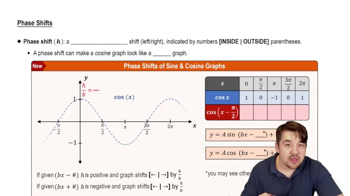
Phase Shifts
Graph Interpretation
Graph interpretation involves analyzing the visual representation of a function to extract key features such as amplitude, period, and phase shifts. For the function y = -1 + cos(x), recognizing the amplitude (1), the period (2π), and the downward shift helps in selecting the correct graph from the provided options. This skill is vital for solving problems in trigonometry.
Recommended video:
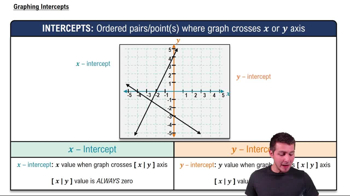
Graphing Intercepts

 5:53m
5:53mWatch next
Master Graph of Sine and Cosine Function with a bite sized video explanation from Nick Kaneko
Start learningRelated Videos
Related Practice


